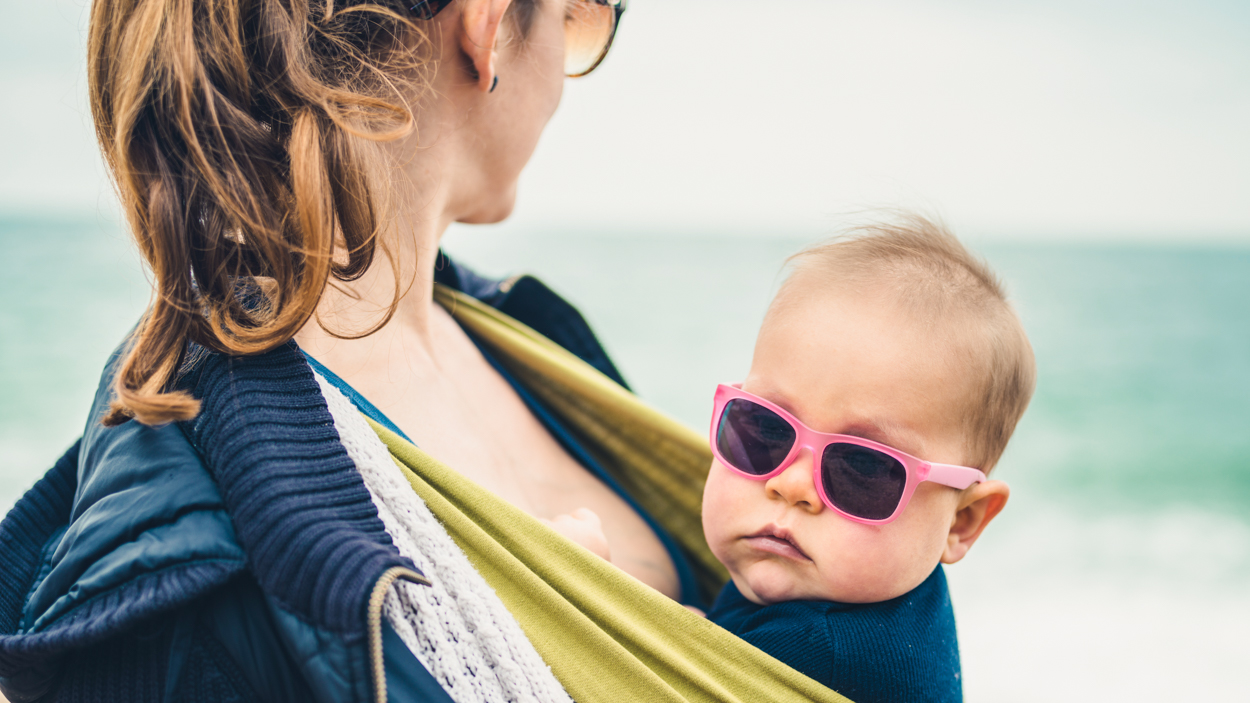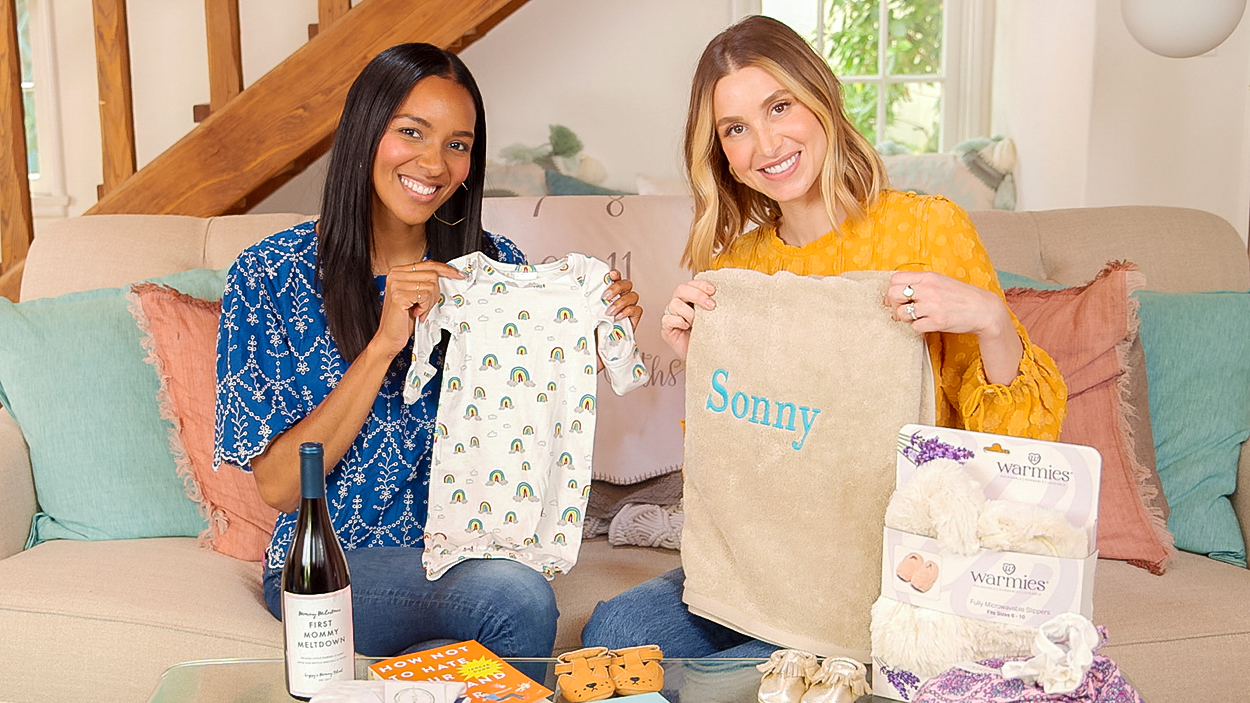

Babywearing. Everyone’s doing it. So there are a ton of options for carriers on the market.
Babywearing has many benefits, not the least of which is that you’re hands-free (hallelujah!) for everything from washing dishes to hiking in the great outdoors to trekking through the airport. But don’t forget parent-child bonding and the studies showing that babies who are worn cry less. Plus, babies just like it. It’s warm and snuggly and the vibrations of your chest when you speak are calming to them.
There two main types of baby carriers: 1) wraps/slings, which are basically large swaths of stretchy fabric that you wrap around yourself and tuck your baby into marsupial-style, and 2) structured carriers – which have a firmer structure and fasten with buckles and clasps.
All carriers take a few trial runs to get used to, so when trying them, allow yourself a few outings to acclimate. Wraps, in particular, can seem ridiculously intimidating at first (you will laugh and also possibly cry the first time you watch a video tutorial), but eventually, you’ll be throwing ‘em onto your body in no time flat like it’s old hat.
Wraps
Our Pick…
Listen, ladies. There are a zillion wraps out there and they’re all pretty similar. The minor differences are in fabric stretchiness, fabric width, fabric length, and general ease of use, i.e. can you put it on without an advanced degree in origami. The origami thing, though? That’s where this wrap shines. Amazingly, we nailed the wrapping technique after just one video tutorial viewing, which is huge. This wrap is sized to the wearer (go down a size if you’re in between) which means that you may not be able to share it with your husband, but the upside is it’ll be really snugly fitted to your body. The material feels soft yet stretchy, hefty yet supportive. Suitable for babies 8-35 pounds, but you may want to transition to a hardier structured carrier after several months.
Pros: Value; Easy to put on; 6 position options for baby; Nursing-friendly; Lightweight; Provides head support; Baby’s weight is well distributed; Machine washable; Various color and fabric options; Sash converts to a carrying bag for travel
Cons: Dad needs to get his own.
Structured Carriers
Usually usable from infanthood to toddlerhood, carriers typically allow baby to face either in or out. Each carrier can be adjusted to fit the wearer, and the lower back support is substantial, making long wear possible. All the carriers we recommend here are ergonomically designed for baby’s hip safety, all offer multiple carry positions (without the help of another set of hands!) and all are machine-washable.
Our Picks…
The Ergo is a tried and true classic — check out its 1,000 Amazon reviews as Exhibit A. This piece of gear is an investment, but it will serve you well through many stages – and through multiple babies.
Pros: Safe, sturdy, and comfortable for different-sized babies; Velcro and buckle combo create a double secured latching; Wide, adjustable straps distribute the weight for the wearer; Breathable cotton keeps baby from overheating (though if you have a summer baby and/or tend to run hot, consider the mesh option); Baby hood for sun protection; 4 position/carry options for baby (front-outward, front- inward, hip and back); With newborn insert you can start wearing babies as small as 7lbs; Can carry up to 27lbs in the front and hip carry and up to 33lbs on the back.
Cons: Infant insert sold separately ($24); No zipper pocket
The LILLEbaby shares many features in common with the Ergo, with some minor differences. It has 6 positions (including hip and back carrying), does not require an infant insert and is designed to hold up to 45 pounds, so if you plan to wear your baby/child for many years, this is a great option. The waistband has lots of padding and lumbar support (though no Velcro, like on the Ergo), and the straps are a bit wider and thicker.
Pros: Value; Thoughtful extras like zipper pocket and hood; No infant insert required – works for newborn to 45 pounds; Easy to get on and off; Option to wear straps crossed X-style or backpack H-style; Two-strap adjustment locations (one for front carrying and one for back carrying); Lumbar pad; Many pattern options; Nursing-friendly; Ventilation flap
Cons: A little extra work required to adjust carrier to switch positions (sometimes you may need to switch between the narrow and wide seat, requiring you to perform a bit of minor surgery on the waistband); Infant harness inside the carrier adds extra security, but it can be a bit of a struggle to get around your baby once she is already in the carrier.
A minimalist’s dream carrier. Given how sturdy it is and the fact that you don’t need to invest in an additional insert, this is a good buy.
Pros: Safe, sturdy, and comfortable for different sized wearers and babies; Easy to clean; Durable to last multiple kids; Can carry newborn to 3 years/33 pounds without infant insert; 4 ergonomic carrying positions; Padded straps and wide waist belt; Mesh fabric keeps baby cool
Cons: No thoughtful extras (pockets, etc.)
BTW…
If you plan on doing a decent amount of babywearing out and about, you may want to invest in a few helpful, inexpensive accessories:
Pacifier Clip: Keep those pacifiers on you – instead of on the ground. We like Babygoal’s.
Sun Hat: Hello, CHIN STRAP. We like the UPF 50+ hats from iplay.











